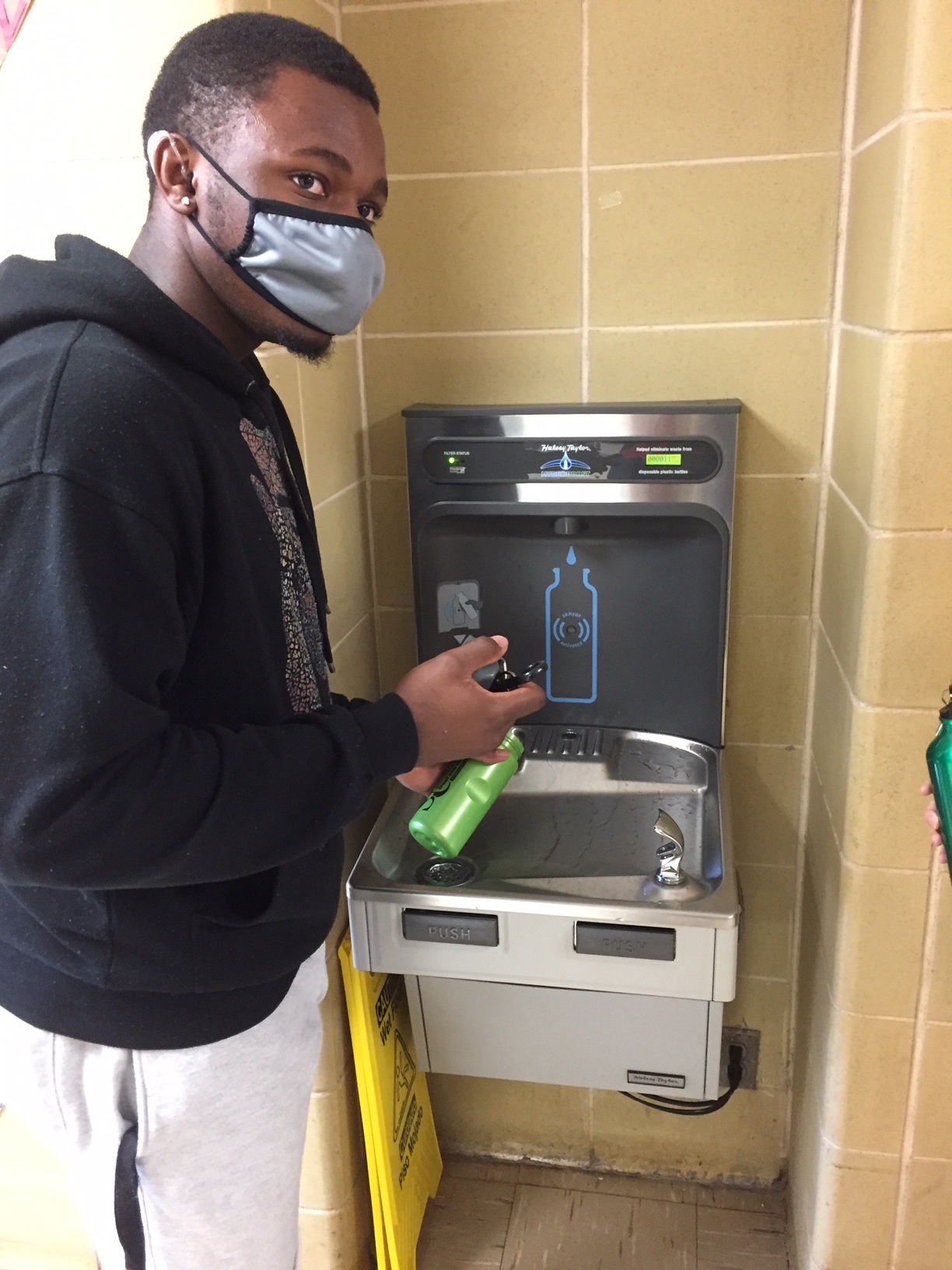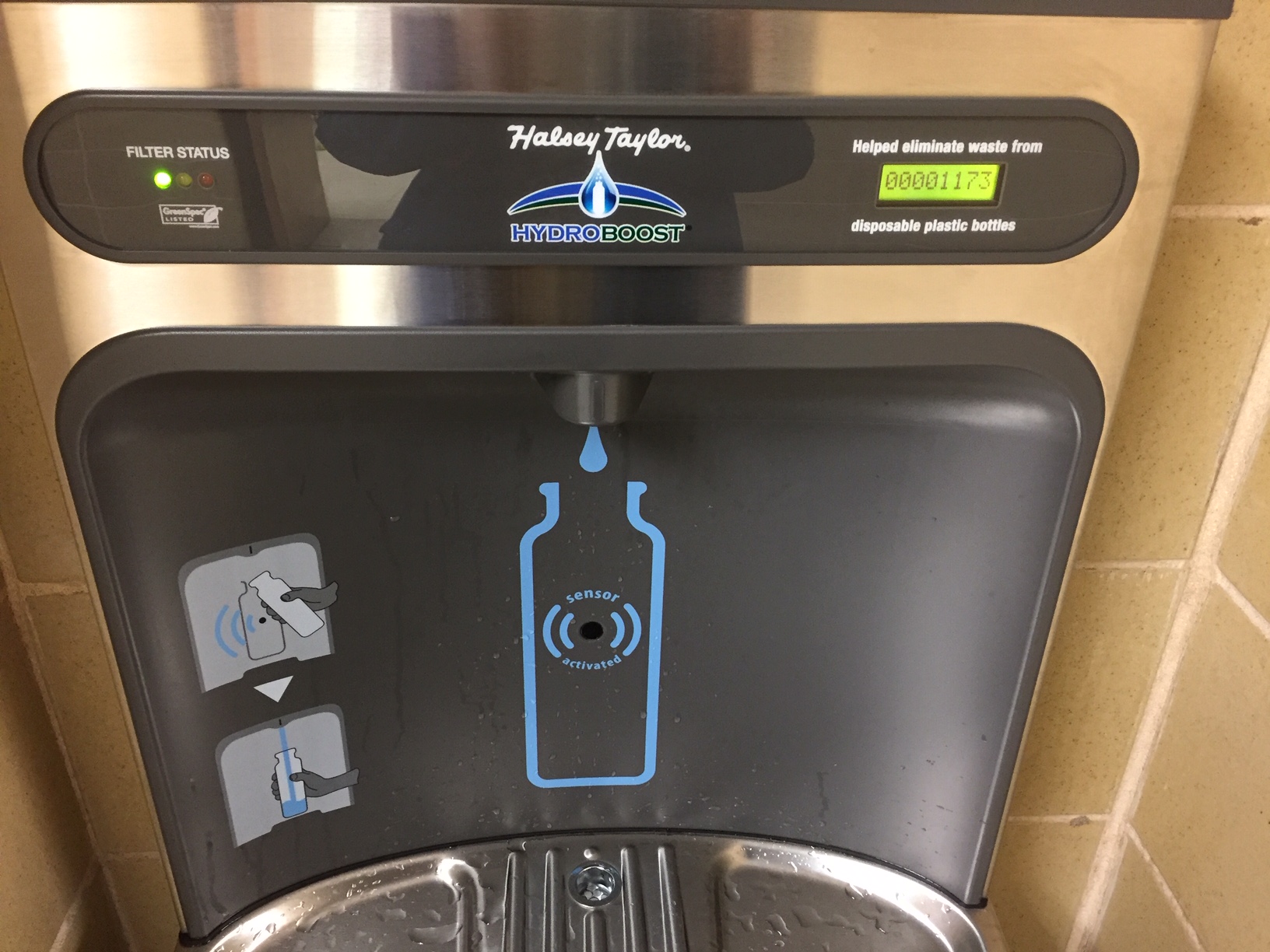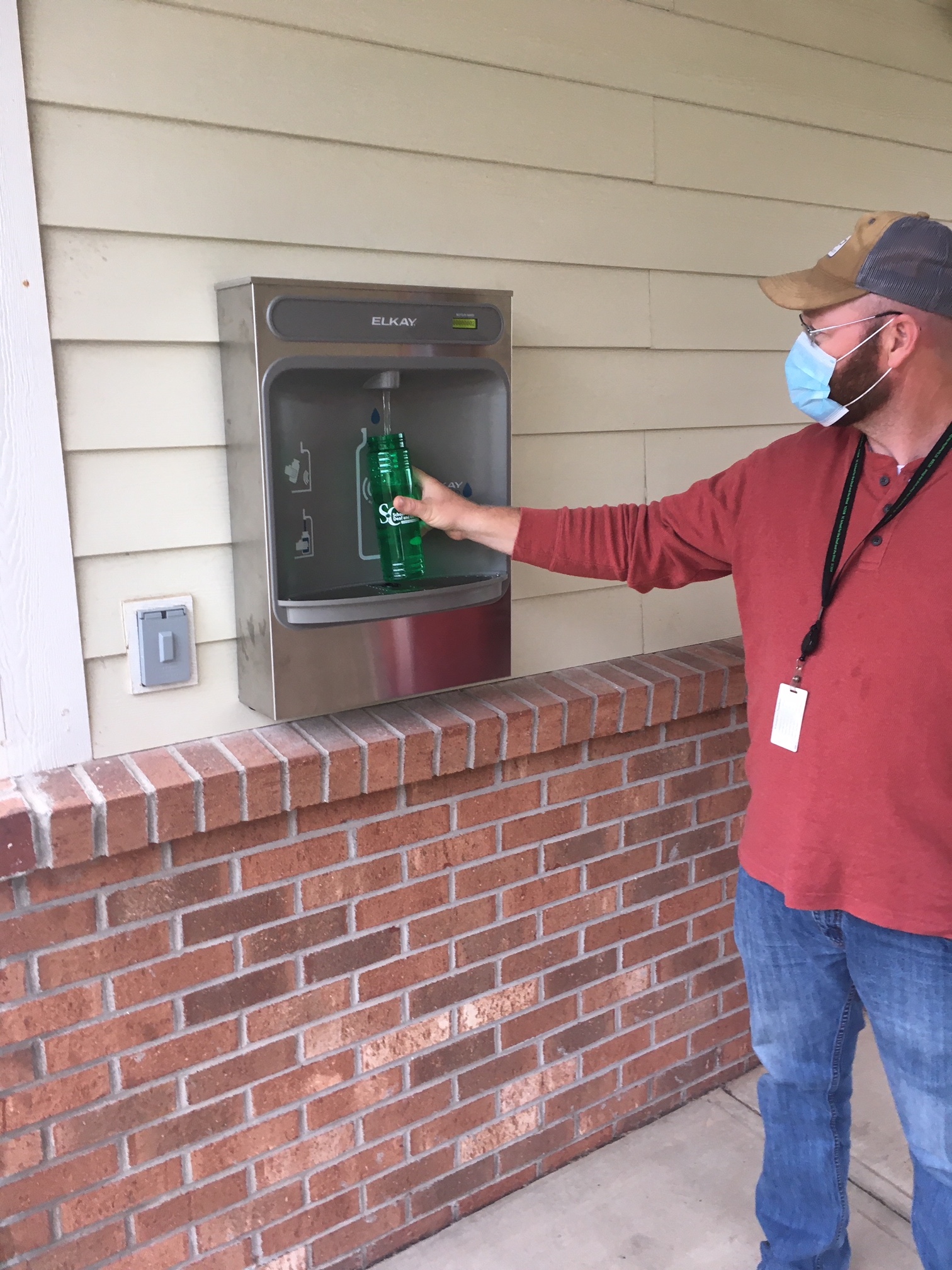Eat Smart Move More South Carolina invested at least $43,219.48 into mini grant projects that addressed healthy eating over the course of a three-year project supported with funds from BlueCross® BlueShield® of South Carolina Foundation. Fourteen projects were completed in eleven different communities.
One of the many successful projects includes the South Carolina School for the Deaf and the Blind….
Unforeseen Advantages
The South Carolina School for the Deaf and the Blind is the only school in South Carolina that serves deaf, blind and multi-sensory disabled students. The school serves almost 1600 students statewide, with 175 students living on campus Monday through Friday. “As a residential school, our students spend a lot of time with our staff and, like all children, they emulate the behaviors they see. If we want them to eat healthier and exercise, we need to include our staff,” said the Director of Development, Weslie Higdon. With this in mind, the Pathways to Healthy Living project was started at the school with a grant from the JM Smith Foundation in 2018. The overarching goal of the project was to encourage staff and students to live healthier.
This project started with a healthy snack initiative in the first year and then moved onto the Fountains of Health, which consisted of buying water bottles for everyone and adding water bottle filling stations in various locations on campus. “We had no idea that the pandemic was coming so it was just like serendipity that this great project was able to work in a way that we didn’t originally think of to keep our students and our staff safe,” Alice Lang, the Grants Coordinator, reflected on the project. 30 water bottle filling stations were added to the campus, four of which were installed with the Let’s Go 3.0 Mini Grant.
Reactions to the Fountains of Health
A lot of the problems they encountered were technical things in the older buildings. The campus was first built in 1849 and one of the water fountains that was replaced with a filling stations was installed in 1969. Some of the ideas they had in mind for the filling stations weren’t feasible due to the way the buildings were originally built. Weslie and Alice praised their contractor, Cooler Dude, for solving the problems that they never envisioned being a problem.
Another filling station was installed in Walker Hall, where 700 water bottles were filled between August and December. Needless to say, the project has been a huge hit among students and staff, especially since the water fountains weren’t able to be used due to COVID-19. Weslie’s favorite part “was when everyone came back to campus and saw them. I had a teacher tell me ‘We were worried that we were going to have to work with them on it, but they were so excited, they just walked right up to it and started filling up their bottles, they were so glad that they finally had one in that school.’”
The other two filling stations are outside by the track, an area Weslie and Alice thought would have to be put on hold. The campus isn’t currently open to the public, but once they open back up, the campus welcomes community members and hosts sporting events like soccer, football, and goalball, a game designed for people with blindness! Weslie is sure the outside filling stations will be popular among the community members. “The welcome center gets calls every day about if the track is open yet so I know that when we do allow people back on campus, it will get used a lot. It’s so nice not to have to cart your water or watch how much you drink or forget it in the car and have to go back and get it.”
Next Steps
This is the final year of funding for the Pathways to Healthy Living project, but the project will still move forward to encourage students and staff to live healthier. Projects for the spring will depend on how COVID-19 pans out, but Alice is sure the project will last past the funding. “Next steps will really be about sustainability. Many of our students are considered low income, and many of the families we work with are struggling to put food on the table right now. They don’t have time to sit down and teach them about nutrition and exercise and the importance of drinking water so that’s a vital role that we play here in instructing our students and giving them an example, so I’m sure that administration will continue with this, maybe with different projects, but it needs to be sustained”
Please visit Eat Smart Move More SC’s Options for Action page for information on how to implement healthy eating strategies in your community.



